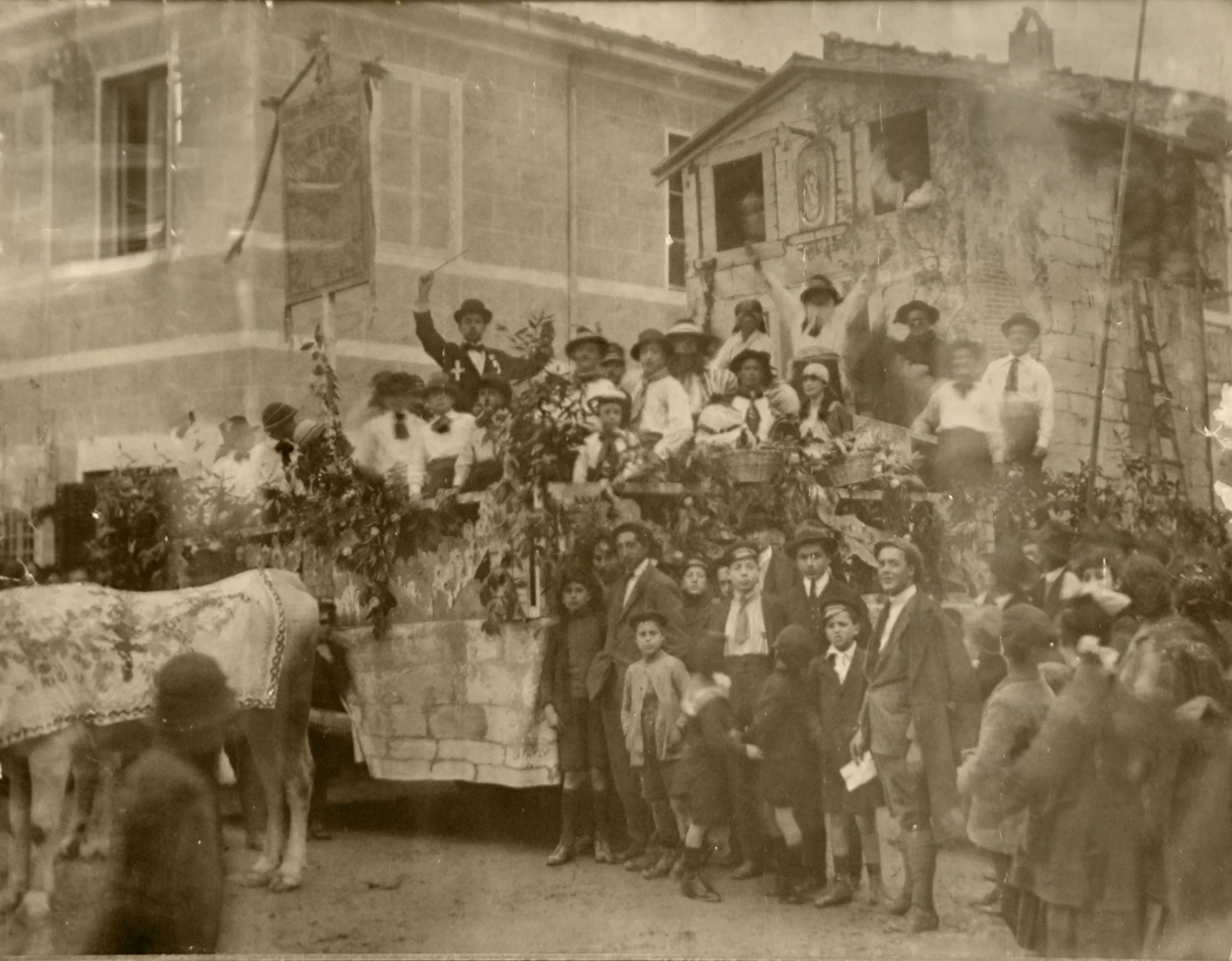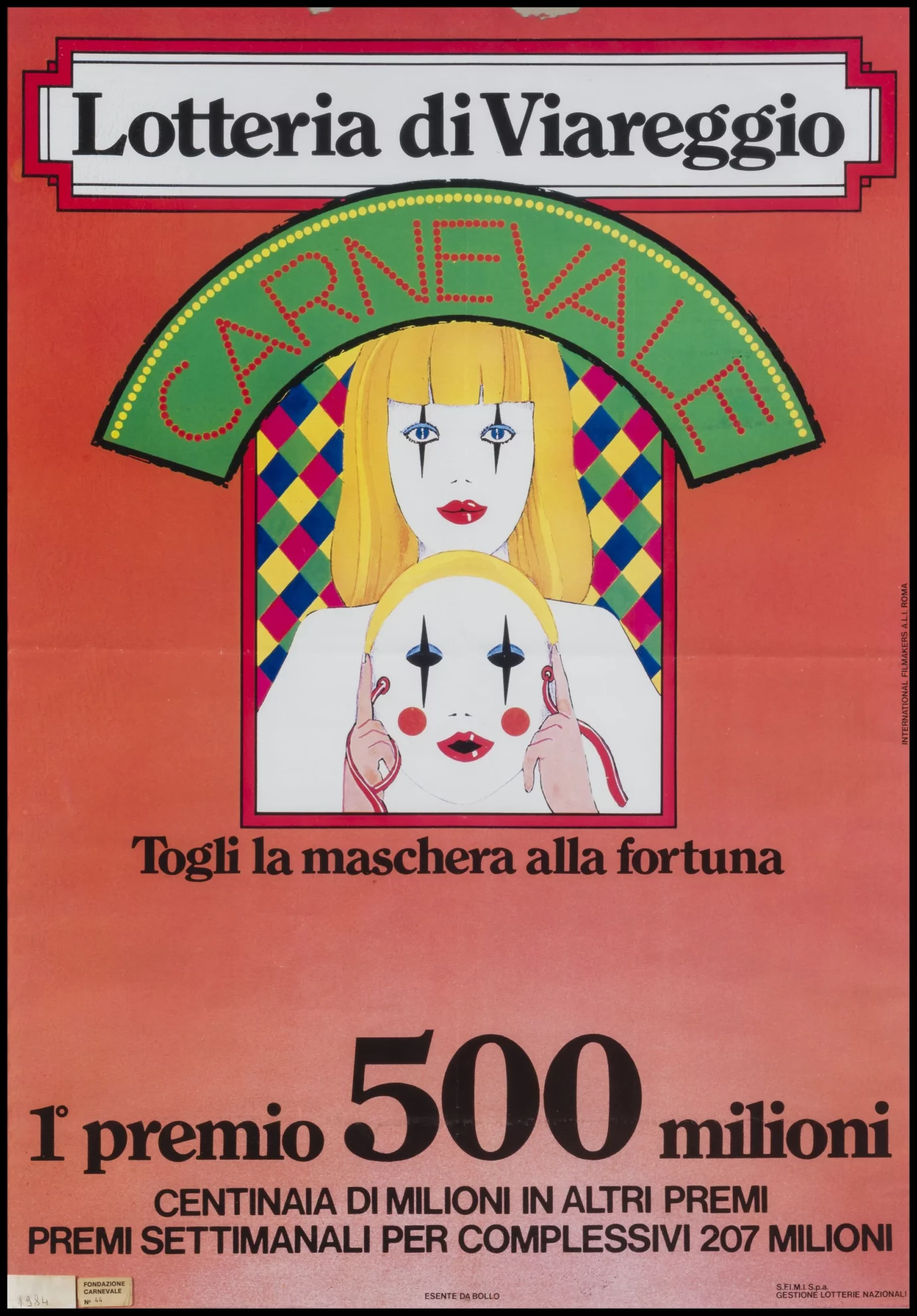The first parade of festively decorated carriages in the historic Via Regia, the heart of the old town, dates back to 1873, specifically February 25, Mardì Gras. The program, published in a manifesto of La Società del Carnevale, dated February 8, 1873 (preserved in the Lucca State Archives), also included vigils at the Pacini Theatre.
From that first nucleus developed the Viareggio Carnival as it is known today: a spectacular event whose fame grew as the size of the floats grew
Mardì Gras on via Regia
With a witty manifesto notarized by Notary Chiassone, the history of the Viareggio Carnival begins. The jury, composed of Messrs. Imparziale, Intendente and Buongusto, would distribute an immense number of bottles of wine to the best masquerade after the Mardì Gras parade. A street parade that was immediately greeted with enthusiasm by the citizenship.
La Società del Carnevale, poster from 1873 preserved at the State Archives of Lucca, Public Security Delegations Fund, volumes 67-97, Viareggio 08.02.1873. Authorization for publication dated 04.01.2023, Prot. 0000013-P”


The parade arrives on the Seaside
The waterfront already embellished by the Art Nouveau wooden structures of stores and bathing establishments welcomes the Carnival parade for the first time.


The music of Carnival
Icilio Sadun composes the first song for Carnival, to lyrics by Lelio Maffei. Il Carnevale a Viareggio will later become the anthem of the event. Furthermore, a group of musicians takes the stage on the winning float Le Nozze Di Tonin Di Burio Alla Corte Del Pinaccio by Giuseppe Giorgi and Fernando Tofanelli.
The first edition of the magazine Viareggio in Maschera is also published in this year.


The paper revolution
Simple gears create movements that bring life to the structure dedicated to the character of Pierrot: this is the first float in motion. An astonishing effect that thrilled the audience.


The paper revolution
Artist Antonio D’Arliano perfects the cast paper technique to make lighter and larger masks. Also, Guglielmo Lippi Francesconi designs the first poster for Carnival.


Burlamacco and Ondina
Viareggio artist Uberto Bonetti designs Burlamacco, thought of as the last mask of the Commedia dell’Arte. Together with Ondina, symbol of summer, Burlamacco is the protagonist of the poster for the 1931 Carnival.


Rebirth after the war
After a five-year hiatus, Viareggio resumed organizing the event. The last edition before World War II was in 1940. From the destruction, creativity was reborn. In 1948, wooden sheds were built on Via Cairoli, where the masters constructed the allegorical floats until 1960.


Carnival on TV
The first national live television broadcast by RAI from an external location is dedicated to the Parade of the Viareggio Carnival. The 1958 commentary was later broadcast on Eurovision.


The greats of the world are now aboard the float
Political satire has always been part of the themes addressed by Carnival: in Carnevale al vertice, Silvano Avanzini brings the world leaders of the time on the float: U.S. President Dwight D. Eisenhower, Soviet Premier Nikita Khrushchev, French President Charles de Gaulle, and British Prime Minister Harold Macmillan.


The first hundred years
The Viareggio Carnival turns a century old and is celebrated with a memorable edition. Guerra e pace by Arnaldo Galli was the non-competing superfloat dedicated to peace and a symbol of the creative genius of all the Carnival masters.


Lucky Carnival
The Viareggio National Lottery is established, linked to the competition of the first-category allegorical floats.


The Cittadella
On June 19th, 1999 the first stone of the Cittadella del Carnevale was laid, designed by architect Francesco Tomassi, with its construction completed on September 26,


Today, the Viareggio Carnival is a major event of art, tradition, entertainment, and culture that captivates audiences from around the world. The Viareggio Carnival fills an entire month with day and night festivities, including float parades, neighbourhood parties, grand balls, and shows.




